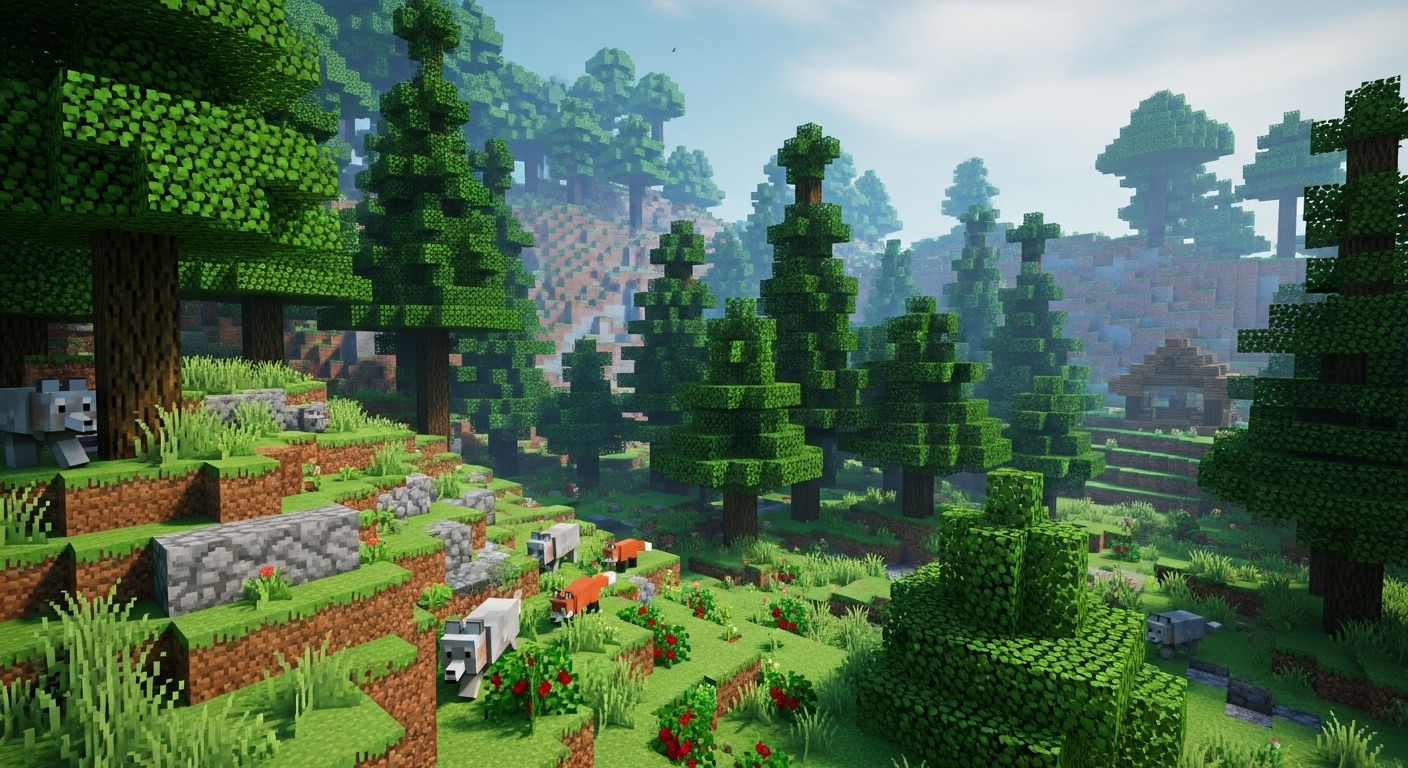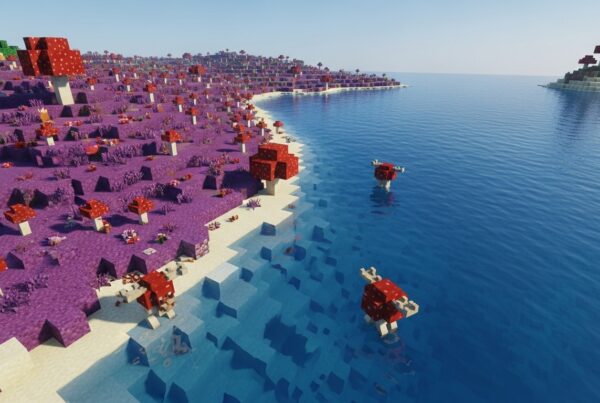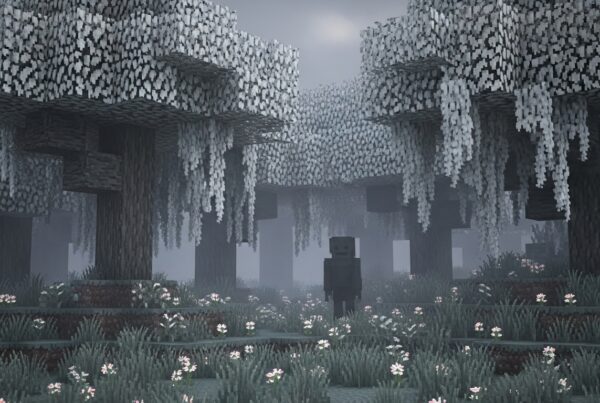The Taiga biome is one of Minecraft’s most iconic forest environments, known for its towering spruce trees, roaming wolves, vibrant red foxes, and abundant natural resources. Offering a balanced mix of safety, challenge, and beauty, the Taiga is a favorite biome for both survival players and builders. This guide explores everything you need to know—from locating a Taiga to harvesting its resources and surviving its dense forest terrain—while also covering the major Taiga variants found throughout Minecraft.
Overview of the Taiga Biome
The standard Taiga biome is a cool-climate forest dominated by spruce trees, ferns, berry bushes, and scattered mossy boulders. It is a peaceful early-game biome rich in wood, food, wildlife, and village opportunities.
Key features include:
- Spruce trees (short and tall varieties)
- Sweet berry bushes
- Wolves and foxes
- Taiga-style villages
- Cool temperature (0.25), but no natural snowfall
- Rolling hills and shaded forest floors
Taiga biomes are distinct from other forest types due to their cooler climate, unique wildlife, and terrain variations.
How to Find a Taiga Biome
Generation Regions
Taiga biomes are common in cool climate zones, typically appearing:
- Between mountains and plains
- Near snowy biomes
- Along rivers and lakes
- In mid-elevation regions (y 60–120)
Visual Clues
As you approach a Taiga, look for:
- Dense clusters of spruce trees
- Ferns and tall ferns
- Podzol or coarse dirt patches
- Red foxes darting through vegetation
- Mossy cobblestone boulders
Locate Command (Java Edition)
Use this command to find the nearest Taiga:
/locate biome minecraft:taiga
Terrain Features of the Taiga Biome
- Dense spruce forests with both small and tall trees
- Rolling hills, occasional cliffs, and rugged forest edges
- Mossy cobblestone boulders scattered across the ground
- Podzol beneath 2×2 spruce trees
- Small caves, ravines, and lake openings
- Light levels vary heavily due to tall canopies, contributing to daytime mob spawns
The Taiga’s terrain is more dramatic than plains but gentler than mountain biomes, creating excellent landscapes for exploration and base building.
Flora and Natural Blocks
The Taiga biome is rich in vegetation and resource blocks that support both survival progression and decorative building.
Vegetation
- Spruce trees (various heights)
- Ferns and tall ferns
- Sweet berry bushes
- Brown and red mushrooms
- Occasional pumpkins
Natural Blocks
- Spruce logs and leaves
- Podzol
- Coarse dirt
- Mossy cobblestone boulders
- Grass blocks with a cool, slightly desaturated color
Podzol Generation Note
Podzol generates naturally beneath 2×2 spruce trees (tall variants). This makes the Taiga one of the easiest places to farm podzol without silk touch if you grow large spruce trees.
Wildlife and Mobs
Taiga biomes host some of Minecraft’s most beloved mobs.
Passive Mobs
- Wolves (can be tamed with bones)
- Foxes (red variant)
- Rabbits (in some areas)
Fox Behavior Highlights
- Foxes sleep during the day under trees
- They can pick up items and carry them in their mouths
- Feeding them sweet berries breeds trusted baby foxes
- Red foxes spawn in standard Taiga; white foxes spawn in Snowy Taiga
Hostile Mobs
- Zombies
- Skeletons
- Spiders
- Creepers
- Endermen at night
- Strays only appear in colder variants, not standard Taiga
The dense tree canopy creates shaded areas where hostile mobs may spawn even during the day—one of the biome’s biggest hazards.
Structures That Generate in Taiga Biomes
Several structures appear naturally within or near Taigas:
Taiga Villages
Taiga villages use spruce wood architecture featuring:
- Cabin-style houses
- Campfires
- Pumpkin farms
- Composters, tannery huts, and fletching houses
- Cats (tabby variant)
- Village paths made of coarse dirt
These villages are highly valuable due to:
- Abundant food sources
- Early-game beds
- Librarian and fletcher trades
- Iron golem protection
Other Structures
- Pillager Outposts (high danger, great loot)
- Ruined Portals (enchanted tools, gold blocks)
- Caves and ravines (frequent and resource-rich)
- Igloos (only near Snowy Taiga borders, sometimes with basements)
The density of caves and ravines in Taiga regions makes them excellent starting zones for mining.
Loot and Resources Unique to the Taiga
Key Resources
- Spruce wood: versatile, richly colored building block
- Sweet berries: renewable food and fox-breeding item
- Mossy cobblestone: used for decorative builds
- Podzol: supports mushroom growth in daylight
- Pumpkins: occasionally generated in patches
Wildlife Benefits
- Wolves: provide combat and defense support
- Foxes: can pick up valuable items and carry them safely
Village Loot
Taiga village chests commonly include:
- Bread
- Sweet berries
- Pumpkins
- Emeralds
- Arrows
- Leather armor
Survival Tips for the Taiga Biome
Early-Game Survival
- Harvest spruce wood for tools and shelter
- Use sweet berries as an early food source
- Watch out for berry bush thorns
- Tame wolves quickly for safety
- Loot Taiga village farms for wheat, potatoes, and pumpkins
Mid-Game Opportunities
- Build a spruce tree farm using 2×2 saplings
- Use podzol farms for large mushroom growth
- Turn a Taiga village into a trading hall or starter base
- Farm berry bushes to create perimeter defenses
Hazards to Watch Out For
- Low visibility due to dense vegetation
- Daytime hostile mob spawns under trees
- Berry bushes causing slow movement and damage
- Steep slopes leading to fall damage
Differences Between Taiga Variants
Standard Taiga (Primary Biome)
- Cool climate, no snowfall
- Red foxes, wolves, rabbits
- Sweet berry bushes common
- Typical spruce forests and rolling hills
Snowy Taiga
- Fully snow-covered terrain
- White foxes replace red foxes
- Strays spawn at night
- Rabbits spawn more frequently
Climate is colder, creating a harsher survival experience.
Old Growth Pine Taiga
(Formerly known as “Giant Tree Taiga”)
- Tall, thin mega spruce trees
- Large podzol patches
- Abundant mossy cobblestone boulders
- Rugged, elevated terrain
This variant is rare and visually striking.
Old Growth Spruce Taiga
(Formerly “Giant Spruce Taiga”)
- Massive wide-trunk spruce trees
- Dense canopy cover
- Rich podzol floor
- High terrain variation
Considered one of Minecraft’s most beautiful forest biomes.
Java vs. Bedrock Differences in Taiga Biomes
- Stray spawn rates differ slightly (higher in Bedrock Snowy Taiga)
- Village layouts vary between editions
- Ruined portal spacing more frequent in some Bedrock worlds
- Mob cap behavior affects wolf and fox population density
These small differences affect exploration and gameplay across versions.
Best Uses for Taiga Biomes
Players often choose the Taiga biome for:
- Spruce megabases and medieval-style builds
- Natural cabins and lodge-style designs
- Villager trading halls using Taiga villagers
- Sweet berry farming
- Wolf and fox habitats
- Podzol-based mushroom farms
The mix of resources, wildlife, and terrain makes the Taiga a highly desirable home biome.
Recommended Minecraft Seeds (Java & Bedrock)
| Seed | Edition | Features |
|---|---|---|
| 87345091266548 | Java | Large Taiga village next to a scenic lake and spruce forest. |
| -41278900455412 | Java | Taiga biome bordering mountains with multiple wolves near spawn. |
| 74419200688001 | Bedrock | Snowy Taiga with an igloo, village, and frozen river close by. |
| 29291044032077 | Bedrock | Standard Taiga next to a lush cave entrance and dramatic cliffs. |
| 66422977112541 | Both | Rare Old Growth Pine Taiga bordering Snowy Taiga with a plains village nearby. |
If you want seeds targeting specific structures—like double villages, outposts, or mega spruce forests—I can generate more.
Frequently Asked Questions
Are Taiga biomes rare?
The standard Taiga is common, but Old Growth variants are significantly rarer.
Do foxes spawn in all Taiga biomes?
Red foxes spawn in standard Taiga; white foxes spawn in Snowy Taiga.
What’s the difference between Mega Taiga and Old Growth Taiga?
“Mega Taiga” is the old name for Old Growth Pine and Old Growth Spruce Taiga biomes.
Is the Taiga biome good for building?
Yes—spruce is a top-tier building wood, and terrain variations create excellent landscapes.
Do villages always spawn in Taiga biomes?
Villages are common but not guaranteed; large Taiga regions increase your odds.
How do I avoid sweet berry bush damage?
Break bushes near your base, wear Feather Falling, or simply avoid walking through them.
What coordinates are Taiga biomes commonly found at?
They generate in cool climate zones—generally mid-latitude regions between plains and snowy biomes.






